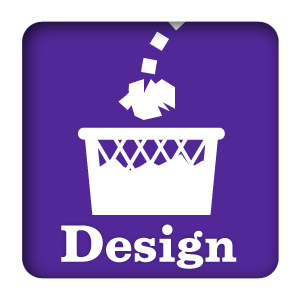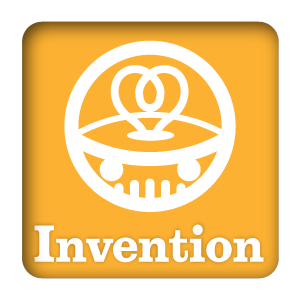After a steady two years of disappointing products and a general sense of malaise with Apple, I’ve been buoyed by the Bill Graham event. It felt like Apple was back on its’ game, releasing great, impressive products and doing some old-fashioned market disruption.
Good times. However, even while we enjoy the thick, syrupy goodness of new products, there does feel like there’s some unfinished business is still at hand.
A disappointing trend from Apple of the past several years has been a return to the ways of “pre-announcing” products. That is to say, they announce a product “coming soon,” even if it is still months away. The iPhone was pre-announced and did spectacularly, but that one example aside, promising so much so far out can only cause problems.
This comes about because Apple has made a determination of some kind that the fewer announcement events it has during a year, the better. In return, the events themselves have gotten grander and more extravagant. The Bill Graham event was a big undertaking, as was the Flint Center Watch event. In both cases, Apple built huge temporary structures for showing off their products that were operational for just a handful of hours.
The desire to build a great event appears to have outstripped Apple’s sense of when a product is finished. If the Watch were announced now, and released with the 2.0 software, would it have suffered the mixed release it did? If Apple had just been patient another six months, would we be talking about a hit rather than Apple having to go to Target and Best Buy to try and move their “luxury” product?
We got another taste of that with the Bill Graham event. The iPhone was going to be ready to ship, because Apple had most of central China churning them out for a while. But the Apple TV was going to be a month or two away. The iPad Pro was three months away, and when the iPad Pro did finally ship, the essential Pencil and keyboard accessories did not ship for a month after that, and are still in scarce supply two months after release.
It would have made a lot more sense to set up a second event, as they have in previous years, to tackle the iPad Pro. They could have given it more time, and they could have also given the iPad mini 4 more than 30 seconds. They could have given El Capitan more than a blink-and-you’ll-miss-it (literally) mention. They could have also tackled some other items on the unreleased agenda, such as the new 21” iMac and new input devices.
The uneasy conclusion is that Apple had to ship the iPad Pro when it did, and they had to ship the Pencil and Smart Keyboard when they did. They knew perfectly well that supply constraints were going to hamstring the introduction of these products, but were powerless to do anything about it. There was no sense in having a separate iPad Pro event, because they knew that the Pencil and keyboard were going to be late, no matter what. Apple was hitting up against it’s limits.
As big as they are, they can’t materialize physical products out of thin air, and they still need to actually build them. Despite having the manufacturing might of China’s impressive factories behind them, there is a ceiling, and Apple has hit it. They dare not impact the factories making the iPhone, but the rest of their product lines will suffer as manufacturing resources have to — at all costs — be spent on their main product.
Meanwhile
Hardware constraints are one thing, but another issue is plaguing Apple in the software and services side of the business. And it’s the same problem.
The topic of Apple’s software has been churned up by the news cycle again, for the second time in the past few months. In an article by Walt Mossberg, who has been Apple’s most prominently featured reviewer for years, he talks about how he’s been having more and more problems with Apple’s software.
To quote the article: “…I’ve noticed a gradual degradation in the quality and reliability of Apple’s core apps, on both the mobile iOS operating system and its Mac OS X platform. It’s almost as if the tech giant has taken its eye off the ball when it comes to these core software products, while it pursues big new dreams, like smartwatches and cars.”
In an article by long-time Apple writer Jim Dalrymple, he postulates three theories why this might be happening. Here, he’s talking about Apple Music’s problems and why it was released as it was:
- They didn’t know how bad it was when they released it. (Highly unlikely)
- They are so big now, they just don’t care. They are Apple, so people will use the software regardless of what they do. (Please don’t let it be this one)
- They were given a timeline to release the software whether it was finished or not. (This one is probably, but very scary)
I agree that Apple’s software and services are in disappointing shape, but I will add to both writers’ conclusions. It is not because they are doing too many side-projects, stuck on deadlines or are negligent, though. As mentioned earlier, the reason Apple’s software quality appears to be slipping is the same problem which is affecting their hardware. Resources.
When Steve Jobs passed on, that was not only the end of his journey, but it was the end of Apple’s journey as an upstart. The little computer company was now the top company in the modern history of business, and they would now have to re-focus and re-define their mission. In that time, a lot of people at Apple decided that it was time to change gears. By all indications, they lost quite a few engineers who decided to get off the ride and even more who wanted to do their own thing.
If you should ever visit Apple’s Job Opportunities page, you will see over 1,100 jobs available for software engineers, out of 3,000 non-retail vacancies. Apple has tried to fix the issue by buying several small to mid-sized software companies, and integrating those employees into Apple. By my own observation, though, many of these bought engineers leave shortly after they are acquired, if LinkedIn profiles are any indication.
Apple can be a pretty intense place. They put a lot of responsibility on people’s shoulders and expect absolute dedication to the job they’ve been tasked to do. Moving from a loose startup culture to the hotplate of Apple is not an easy transition, one might imagine. If you find that kind of atmosphere scary instead of challenging, you’ll leave as soon as possible.
So that’s where Apple finds itself, in the middle of an intense brain-drain brought on by it’s own success. They’ve lost some long-time stalwart engineers and can’t buy new ones, sacred off by the focused intensity. The old Apple’s intensity worked for them because they had a mission and you wanted to be there to fight for the cause. The new Apple has a weak, ill-defined mission and just a lot of intensity.
With a deficit of programming engineers, software projects get too little attention and become neglected or under-served. Much like Apple’s hardware constraint issue, the company spends all necessary resources on their core product, which is system-level OS X, and will live with delays and shortcomings in other software products to protect it.
So that’s what its comes down to. Apple will produce great iPhones and maintain a great software stack in OS X to run on the iPhone. But everything else is competing for time, attention and resources and Apple can’t fix it.
How Apple Can Fix It
“Our greatest resource is our people” is one of those empty corporate phrases you’ll hear everywhere, and Apple is no different, often using that expression to describe itself. It’s an empty phrase because it’s just so gosh darn easy to say without actually believing it. When it comes to Apple, though, you have to re-examine that phrase from the inside out. From Apple’s perspective that phrase is concise and direct. People are Apple’s singular resource. Robots do not design iPhones. Computers do not write code. In fact, Apple is only made up of people. There are some buildings, some office supplies and thousands of Aeron chairs, but all Apple is, is people. Even the IP is an asset that people created, and only people can implement IP into a product.
Therefore it stands to reason that Apple’s life blood is in attracting the right people into the fold. Steve Jobs defined his job as primarily recruiting. He recognized the importance of the task and spent much of his time getting it right.
Ping-pong tables and massages in the workplace won’t solve this. Money is also the wrong answer. Spending money to get people involved results in attracting people wanting to get the money more than doing the work. You want to attract people who want to be challenged and revel in that kind of opportunity. You work at Apple for the mission and the challenge. It’s a sense of mission that will attract the people you want. You promise them that they will be tested to the limits of their abilities but guarantee them that their efforts will make a dent in the world. It almost sounds like an Army recruitment pitch.
To do this, Apple needs to regain this sense of mission. Right now, their mission is an uninspiring effort to “grow marketshare” and “enrich experiences.” Much stronger is the desire to “change the world.” Apple may need to drop some of the things it’s doing now and prune the product tree to get there. It certainly should examine what’s necessary to sustain the company not only financially but spiritually. What products do you make or could you make to inspire your own people and attract the next generation of talent?
So, there are some questions you need to ask yourself, if you’re Apple:
- Are we recruiting as hard as we possibly can for software engineers?
- If we are not recruiting as best we can, why not? What do we value more than finding as many top employees as we can get our hands on?
- If we are recruiting as hard as we can, have we just tapped out the available talent pool? If that is the case, do we need to adjust our expectations and reduce the number of products we market and the frequency in which we update them?
And on the matter of manufacturing constraints, the questions are nearly the same:
- Are there additional manufacturing resources outside of our current partners that we can build our products with?
- If there are more resources for us to use, why are we not using them? What do we value more than getting our products to market faster and in abundant quantities to put our great products in people’s hands?
- If we are using all available manufacturing resources, and maxed out our suppliers in our supply chain, have we just tapped out the available resources? If that is the case, do we need to adjust our expectations and reduce the number of products we market and the frequency in which we update them?
In both cases, this question seems paramount to the continued health of Apple:
- Are we making products that inspire ourselves and the people around us to change the world?










